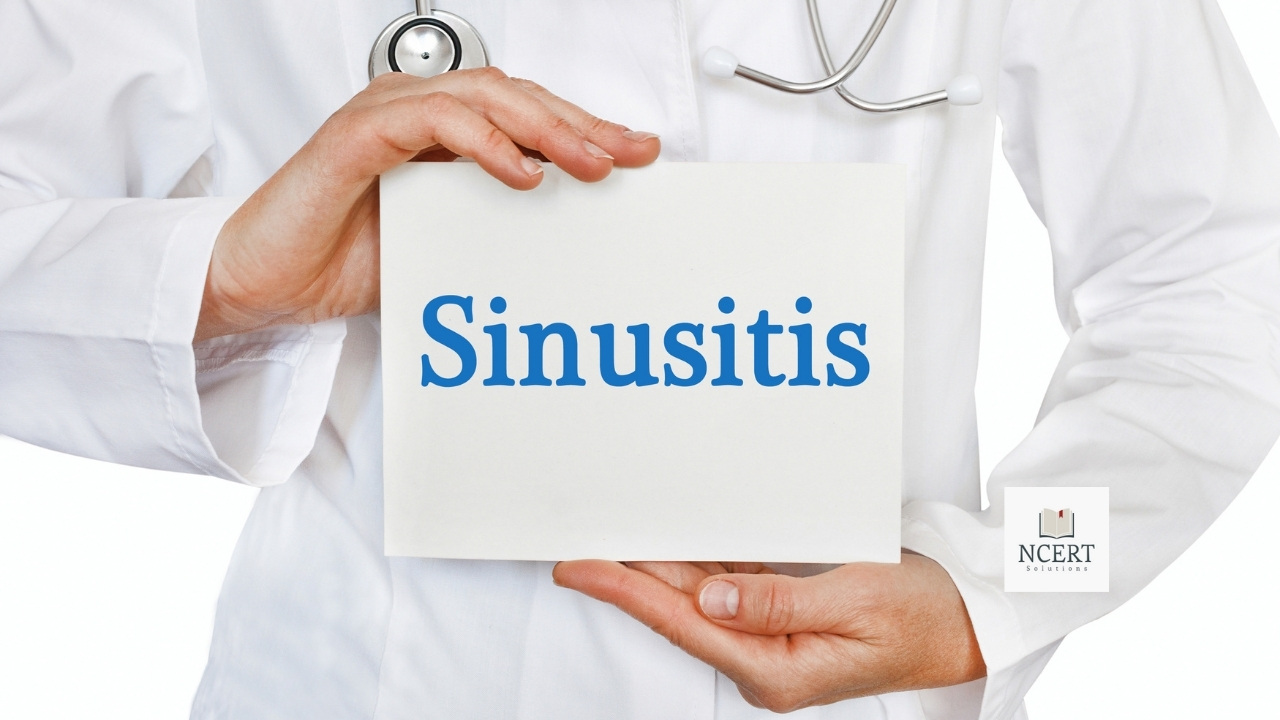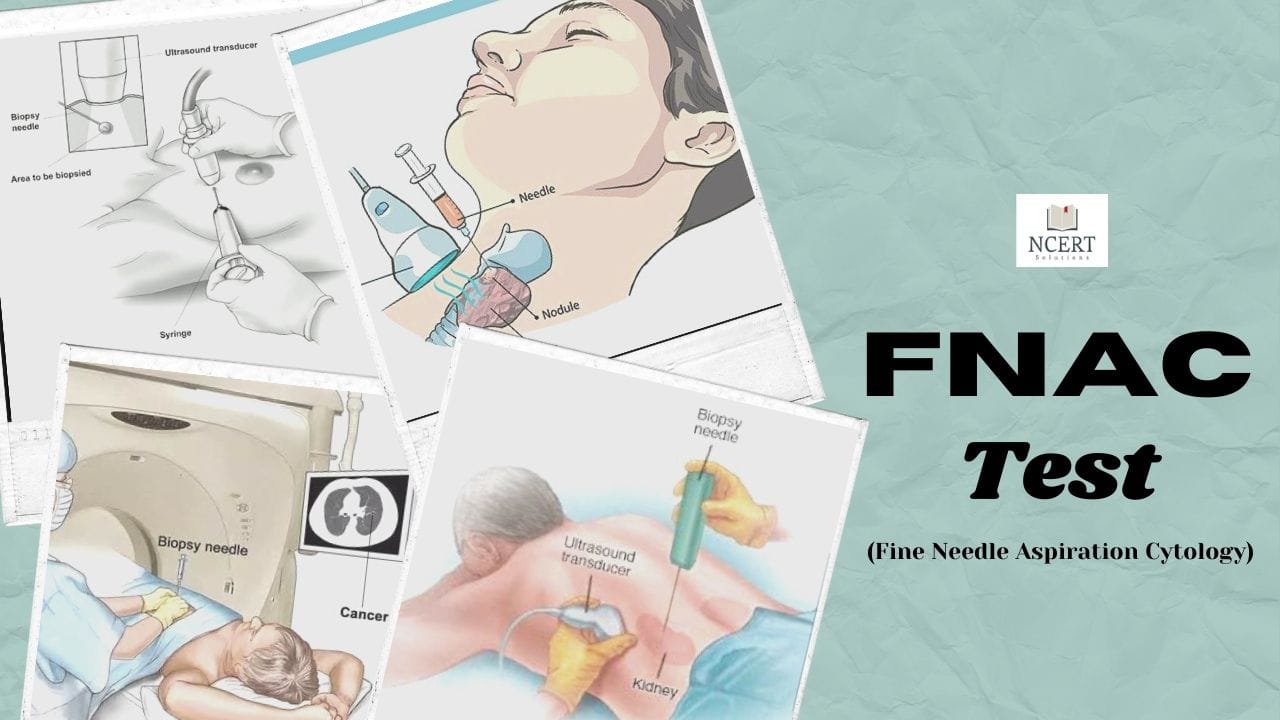Colds and headaches are common ailments, but they can sometimes lead to serious illnesses. One of these is sinusitis or Sinus infection, which is classified as a serious disease.
What is the meaning of sinusitis?
Many people search for the meaning of sinusitis or Sinusitis infection across the internet. Here, we are telling you the meaning of sinus –
The Sinuses are small, hollow cavity-like structures filled with air that begin to arise around the nose, behind the cheekbones and forehead, and in the area between the eyes.
Like the maxillary sinus in the facial bone on both sides, the frontal sinus affects the forehead above the nose and likewise –
- the ethmoid sinus near the eyes and
- sphenoid sinus adjacent to the brain in the middle of the back.
What is a sinusitis infection?
A sinusitis infection is often referred to as the Sinus infection which causes inflammation of the sinuses. Sometimes everything starts flowing from the nose in it. The pain caused by a sinus infection depends on the type of sinusitis.
A person who is suffered from Sinusitis infection may experience intense irritation under the nose. People affected by Sinusitis infection may really become uncomfortable due to this itching.
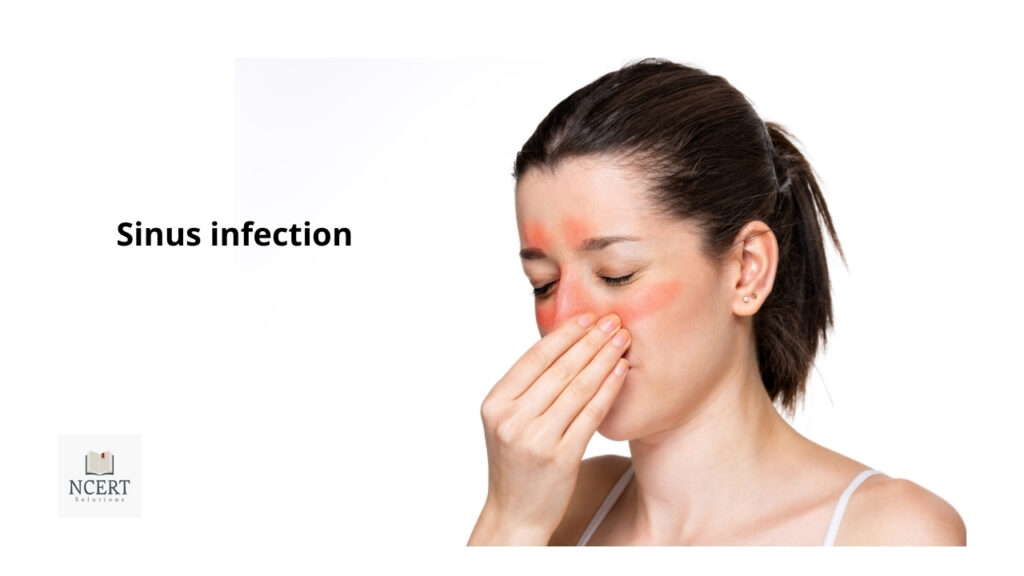
It begins like the common cold and then progresses to a bacterial infection, viral infection, or fungal infection.
The Sinusitis infection/disease is called –
- Acute – if Sinusitis infection lasts between three and eight weeks, and
- Chronic – if sinusitis infection if it lasts more than eight weeks.
Every year, three out of ten people fall victim to this disease.
Types of sinus infection
Sinusitis or Sinus infection is classified in several ways, including the duration of infection (acute, less acute, or longer), inflammation (infectious or non-infectious), etc.-
- 1. Acute sinus infection (short-lasting) – Usually its infection in the body lasts for less than 30 days.
- 2. Subacute sinus infection – Its infection can remain stable for more than a month but does not last more than 3 months.
- 3. Chronic sinus infection (long-lasting) – This can remain stable in the body for more than 3 months. Chronic sinusitis may also be further sub-categorized as
- Chronic sinusitis with or without polyps in the nose
- allergic fungal sinusitis
- 4. Recurrent Sinusitis: It occurs when a person is exposed to infection several times per year.
Infectious sinusitis usually results from direct virus infection. Often a sinus infection or a fungal sinus infection can also occur due to bacterial growth, but this is very rare. Subacute sinus infection and chronic sinus infection are both the result of incomplete treatment of acute sinus infection.
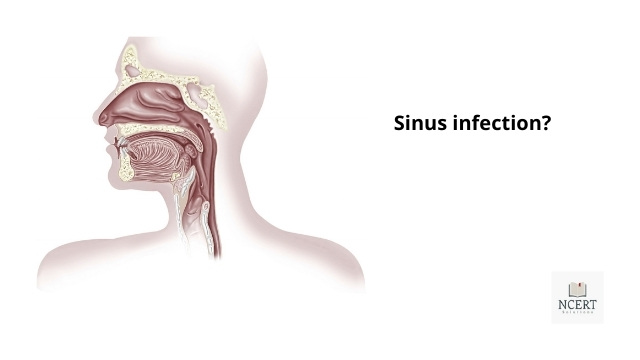
Non-infectious sinusitis is caused by irritants and allergies, which follow acute, less acute, and chronic sinus infections as common sinus infections.
Symptoms of Sinusitis
Below are the major symptoms and signs of Sinusitis –
- Runny nose or post-nasal drip (excessive mucus build-up in the throat due to nasal passages).
- Nasal congestion due to which difficulty in breathing through the nose.
- Decreased ability to sense smell and taste.
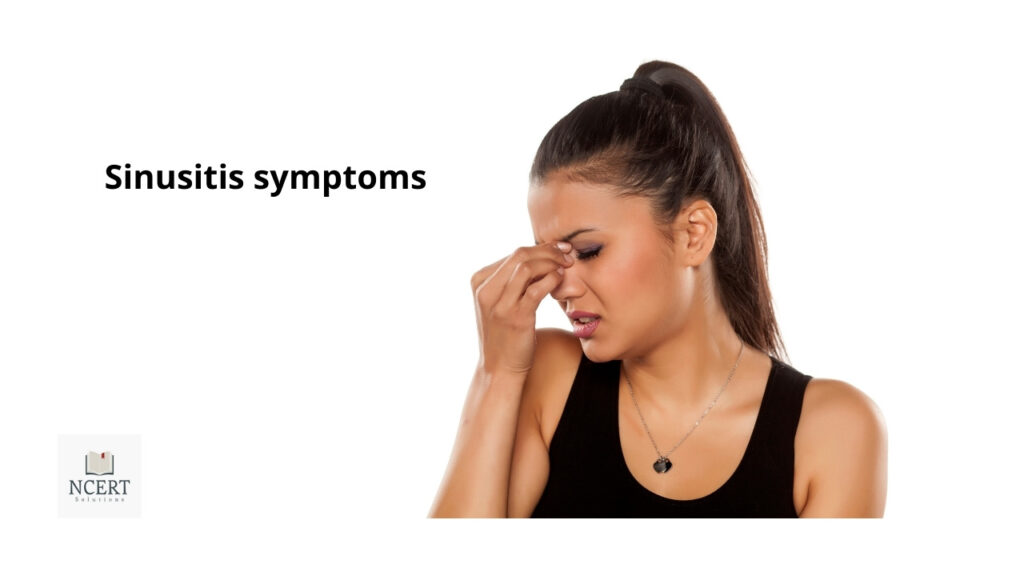
There could also be other symptoms of sinus or Sinusitis, which include –
- earache
- Pain in upper jaw and teeth
- increased cough at night
- to have a sore throat
- bad breath
- feeling tired or irritable
- Getting nausea
The symptoms and signs of chronic sinusitis and acute sinusitis are similar. But acute sinusitis is short-lived and is associated with a cold. On the other hand, the symptoms and signs of chronic sinusitis last longer and because of this, you often feel more tired. Fever is not a common symptom of chronic sinusitis, but acute sinusitis may be accompanied by fever.
When should I see a doctor?
You may have acute sinusitis several times before you develop chronic sinusitis. With recurrent acute sinusitis, definitely see a doctor or aks follow-up in these situations –
- You have had acute sinusitis many times and it is not getting better even after treatment.
- Sinusitis symptoms lasting more than seven days.
- Symptoms do not improve even after seeing a doctor.
If you experience any of the following symptoms, consult a doctor immediately. These symptoms may be signs of very serious infection including sinusitis or sinus infection –
- high fever
- Redness and swelling, of the skin around the eyes
- Feeling severe headaches and not getting better even after taking medicine
- constantly feeling confused
- seeing one thing twice or other trouble seeing
- stiff neck
Causes of Sinusitis – Why does sinus happen?
Sinusitis occurs due to many reasons. But the main reason for this is the accumulation of fluid in the sinus or nose, in which germs grow. Other potential causes of Sinusitis infection are –
- Virus – Most sinusitis infections in adults are caused by a virus
- Bacteria – Bacterial infection may also cause a sinus infection
- Pollution – Due to chemicals and pollution, mucus increases
- Fungus – Either the fungus in the air causes allergies in the sinuses or this fungus enters the sinus and becomes the cause of sinusitis.
- Some other medical conditions – cystic fibrosis, gastroesophageal reflux disease (GERD, which is a less severe form of acidity), HIV, and weakened immunity cause your nose to become blocked.
What increases the risk of sinus?
The following people are more prone to sinusitis –
- People who have had an infection in the respiratory tract in the past, such as a cold, etc.
- In whose nose germs have grown, due to which the nasal tube becomes swollen.
- Those whose immunity has been weakened due to some disease or due to the treatment of any disease.
- Those who have asthma, because there is a connection between it and chronic sinusitis.
- Those who are allergic to dust, pollen and animal hair etc.
- Whose inner texture of the nose is not good. The septum is a type of bone present in your nose. This bone divides the nose into two parts. If the septum is too bent to one side due to an injury or naturally, there is an increased risk of sinusitis or other infection.
- People who smoke.
- Having a tooth infection increases the risk of sinus infection.
Prevention of Sinusitis or Home remedies for Sinus
Some of the preventive measures or home remedies for sinusitis are as follows –
- Wash hands thoroughly and maintain hygiene.
- Avoid pollution like dust and mold and try to live in a clean environment as possible.
- Avoid upper respiratory tract infections. Apart from this, do not touch or come in contact with people who are suffering from cold. Wash your hands frequently with soap, especially before eating.
- If you have any known allergies try to avoid them.
- Avoid smoking and polluted air. Tobacco smoke and polluted air cause inflammation in your lungs and nose.
Sinus Examination – Diagnosis of Sinusitis
Sinus infection is often diagnosed based on previous medical information and tests done by a doctor.
Empty X-ray studies of the sinuses can be misleading. CT scans and MRI scans are very sensitive machines in their ability to diagnose sinus infections, but these machines are very expensive and not available in most hospitals. That’s why sinus infections are usually diagnosed early and treated based on medical findings.
These findings may include –
- Swelling and reddening of the nasal passages
- Nasal discharge (this may be the most likely symptom to diagnose a sinus infection as a symptom)
- A feeling of pain in the skin on touching the skin of the cheeks or forehead.
- Swelling near the eyes and on the cheeks
Sometimes, nasal discharge is examined for secretory cells which help to differentiate between infectious and allergic sinusitis.
If a sinus infection does not get better with early treatment, a more in-depth study with the help of a CT scan and MRI scan may be done. Ultrasound is used to diagnose sinus infections in pregnant women, but it does not work with CT. Scans may not show the exact symptoms like MRI and rhinoscopy or endoscopy.
In addition, endoscopy is used to obtain diagnostic material of the sinuses. This reaction is done by the otolaryngologist with the help of general sedation. Sometimes the patient may also need to be given a sedative (sedation). According to some investigators, endoscopy samples are comparable to those obtained by piercing with a needle.
Fungal infection is usually diagnosed by biopsy. Allergic fungal sinusitis, characterized by inflammation of the fungal elements of the sinus cavity, is diagnosed on the basis of a CT scan and imaging tests or by physical examination.
Sinusitis Treatment
Sinusitis can be treated with the help of medicines and several home remedies, such as steaming hot water on the face. In addition, some of the goals of sinusitis treatment are:
- try to cough up mucus
- reduce sinus inflammation
- reduce pain and pressure
- Get immediate treatment for any type of infection
- Prevent tissue or scar formation, and prevent further damage to the lining of the nose and sinuses
With the help of antibiotics or home remedies, the patient may feel a little better before getting treated for chronic or acute sinusitis. But sometimes it can cause symptoms to become more severe and may require additional treatment.
Read more: sinus home remedies
Antibiotics for sinusitis:
1. Acute sinusitis
Usually lasts no more than four weeks. Every second or third person with sinusitis can improve themselves significantly without the help of antibiotics.
Sinus infections are usually caused by viral infections, in which antibiotics are unable to take effect. A doctor’s advice about this can help determine the right treatment and antibiotics for acute sinus infections.
If an acute sinus infection is caused by a bacterial infection, most people get better on their own with antibiotics. The time taken to recover depends on the antibiotics and the severity of the infection.
When the patient is advised to take antibiotics, then the patient should take antibiotics till the complete recovery, even if the patient feels healthy, talk to the doctor and follow his instructions. Because the infection may not be completely eradicated from the body.
2. Chronic sinusitis
A Sinusitis infection that lasts for 12 weeks or more is called chronic sinusitis. Chronic Sinusitis treatment is very difficult and antibiotics also remediate it slowly.
Antibiotic therapy is usually used for chronic sinusitis treatment because it requires a longer course of treatment. In this, kind of sinus treatment the patient may need to take more than one antibiotic. During treatment, corticosteroid nasal sprays can be used to reduce swelling in the lining of the nasal airways.
Sinus infections are also caused by fungus or bacteria in some people. It affects more to people who are prone to infections compared to high immunity persons. These people should get early treatment of the sinus so that it can not create other health issues.
For people whose immune systems are not working properly, the risk of these sinus infections may be increased. The risk of sinusitis infection is also high for people who use oral and inhaled corticosteroid drugs (such as prednisone).
Fungal sinusitis, which is responsible for many chronic sinusitis cases does not respond to antibiotics and can be treated with antifungal medications, corticosteroids, or surgery.
If the patient has taken antibiotics for more than a limited period of time, and symptoms are still visible or some complications (such as infection of the bones of the face), in this case, surgery/operation may be required.
